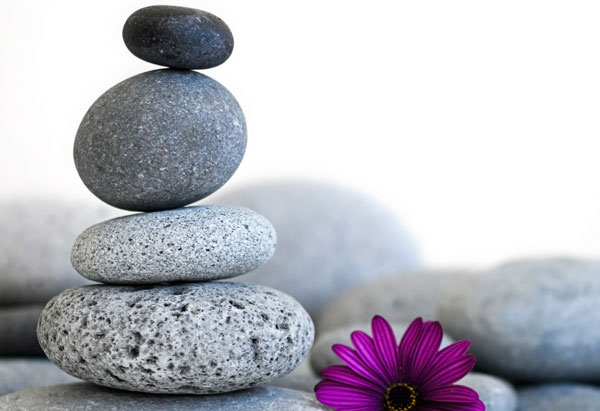
2. Artha (material wellbeing and wealth acquisition)

3. Dharma (righteousness, duty and order)
4. Moksha (spiritual liberation, union with the Supreme)
Fulfilling and Balancing the Purusharthas
 The civilisation of the Hindus founded itself upon the idea of a fulfillment and harmonising of these four motives. The culture was built in order to support these things in life, in their right balance. Each is considered more important than the previous (Moksha is beyond Dharma, which is in turn higher than Artha and Kama). Yet all four were considered important in the development of individual and society.
The civilisation of the Hindus founded itself upon the idea of a fulfillment and harmonising of these four motives. The culture was built in order to support these things in life, in their right balance. Each is considered more important than the previous (Moksha is beyond Dharma, which is in turn higher than Artha and Kama). Yet all four were considered important in the development of individual and society.
We can see from this, that the accusation that has more than once been hurled against Hinduism – that it denies all value to life, detaches people from worldly interests and insists on the unimportance of material well being is unfounded.
It was accepted that for all but very few people, the achievement of Kama, Artha and Dharma must come before the final quest for spiritual realisation. A person must enjoy in some measure what worldly life has to offer, pay off debts to society and do one’s bit in maintaining a healthy communal life before turning away from the transient world and attaching ourselves to the Changeless Reality that lies veiled beyond material existence, which alone can give everlasting joy.
The pursuing of wealth and pleasure were given their place in the scheme of life. But theseimpulses were not allowed to become primary motive forces for society or to go out of control (as they have in the West today).
The efforts towards fulfilling Kama and Artha were placed in the context of dharma and were therefore made noble. Hindus recognised that a life governed excessively by self-will, passion, sense-attraction, self-interest and desire cannot be the natural whole of human existence. It cannot lead to lasting happiness, as we see in societies where this has been allowed to happen.
Development of the Hindu civilisation to its apex
 It was on this first firm and noble basis that Hindu society grew to its maturity and became a thing rich, splendid and unique. It grew to astonishing heights of culture and civilisation; it lived with a noble, well-based, ample and vigorous order and freedom; it developed a great literature, sciences, arts, crafts, industries; it rose to live the highest and noblest ideals, including knowledge, grandness, heroism and braveness, kindness, service and human sympathy and oneness; it laid the inspired basis of wonderful spiritual philosophies; it discovered the secrets of external nature and discovered and lived the boundless and miraculous truths of the inner being; it fathomed the inner truths and understood and possessed the world.
It was on this first firm and noble basis that Hindu society grew to its maturity and became a thing rich, splendid and unique. It grew to astonishing heights of culture and civilisation; it lived with a noble, well-based, ample and vigorous order and freedom; it developed a great literature, sciences, arts, crafts, industries; it rose to live the highest and noblest ideals, including knowledge, grandness, heroism and braveness, kindness, service and human sympathy and oneness; it laid the inspired basis of wonderful spiritual philosophies; it discovered the secrets of external nature and discovered and lived the boundless and miraculous truths of the inner being; it fathomed the inner truths and understood and possessed the world.
Disturbance of the balance and subsequent decline
As the civilisation grew in size and complexity some tendencies began to crystallise that upset the healthy balance of life’s goals that enabled the earlier society to develop. There grew an exaggerated stress on one or the other purusharthas without a harmonisation of the whole. Society became more artificial and complex, less free and noble, more of a bond on the individual, less a field for individual expression, growth and evolution. The old fine integral harmony gave way.
Artha and Kama, wealth/acquisition and pleasure/desire, were sometimes chased without the uplifting touch and emphasis of Dharma. The concept of Dharma itself became spoiled – it became so rigid so as to stand in the way of the freedom of spirit.
Moksha was pursued to the hostility of life and not as its crowning glory (i.e. people who were pursuing spirituality became totally divorced from life, and people saw spirituality as something irrevocably divorced from the rest of life – a tendency which the Gita warns against). This weakened society and made it prey to degenerative, and later on aggressive forces.
But even so some strong basis of the old knowledge did remain and kept alive the soul of the Hindu civilisation. It inspired, provided meaning to and kept alive the hopes of the people even in the darkest days of Hinduism. It is such that Hindus alone out of all ancient civilisations still exist today having lived an unbroken continuous collective life.
The importance and application of the Purusharthas in today’s world
An understanding and balance of the Purusharthas is important to our individual and collective life as we move forward into the future. The way that the world is currently moving in is towards the blind imitation of Western society – where the tendencies to pursue
the values of Kama and Artha at the expense of any sense of Dharma is very high, and is even endangering our planet.
For example, economic gain without sense of the necessity of maintaining the cosmic order is what has led to the world’s environmental crisis. Life without a concept of Dharma has not created any lasting sense of happiness in the people who live like this. One only needs to point at the huge increase in psychological problems in the lives of people in the West to demonstrate this.
On an individual level, pursuing Kama and Artha alone can never truly lead to a feeling of lasting satisfaction, because it is their nature to multiply their desire the more they are indulged in. Yet when permeated with the idea of Dharma, their pursuit is transformed into something noble, beautiful and of a more enduring value.
Yet what is Dharma? Most of us are not familiar with the term and what it practically means. We need to rediscover our understanding of Dharma on multiple levels (individual, social, national) and what it means to live by Dharma.
 The pursuing of Moksha or inner spiritual endeavour is still alive in some sections of Hindu society (and in fact has even been rediscovered by the West, through an influx of many Hindu and Buddhist teachers into the west, some of whom have vast followings). But the quest for Moksha and its value as the highest goal of human life is not understood amongst most Hindus, nor widely taught. The tendency amongst spiritual aspirants to have a disdain and lack of meaningful involvement in society still exists. This needs to be redressed.
The pursuing of Moksha or inner spiritual endeavour is still alive in some sections of Hindu society (and in fact has even been rediscovered by the West, through an influx of many Hindu and Buddhist teachers into the west, some of whom have vast followings). But the quest for Moksha and its value as the highest goal of human life is not understood amongst most Hindus, nor widely taught. The tendency amongst spiritual aspirants to have a disdain and lack of meaningful involvement in society still exists. This needs to be redressed.
As Sri Aurobindo once said “we can’t take the best minds out of society and then still expect society to flourish”.
One thing is for sure, the concept of the Purusharthas, the Four Great Aims of Human Endeavour, and the harmonisation of these aims, is something that is of value as long as society exists. A study of them and application of them today offer many possibilities through which we can create a grander, more beautiful and more meaningful existence.













































I WANT THIS PAGE PRINT OUT
I hope you are able to get one now